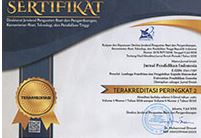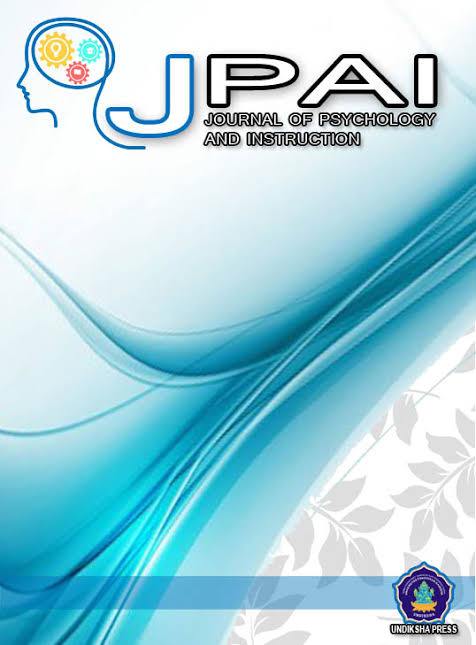Leveraging the Incoporation of Youtube and Whatsapp to Support Students Understanding and Learning Motivation in Senior High School
Keywords:
Social Media, learning motivation, online-based social mediaAbstract
The use of social media in higher education provided a collaborative learning environment and increased peer engagement and interaction between educators and students. Nowadays, many students used social media in their daily lives to easily communicate over long distances without having to meet directly at school. Social media was important for students because it served as a place for gathering and searching for information. Therefore, the integration of social media into learning process can be an innovation for today’s learning strategy. This research was conducted to investigate students' perceptions of their learning motivation towards the implementation of social media-based online learning at SMAN 1 Ubud. Some data collection techniques used for collecting different types of data, such as field research, participant observation, and in-depth interviews, as proposed by Bungin (2010). The qualitative approach was employed to analyze the data by using the thematic analysis model proposed by Braun and Clarke (2006). The process of thematic analysis involved analyzing the data, where each question contributed to the understanding of the research problem and led to a holistic view of the overall picture. The result of this research shows that social media can assist students in developing their cognitive aspects. The students' learning motivation increases due to several factors within social media, such as diverse content, various learning sources, and the presence of animations, visuals, and audio. These positive impacts make students enthusiastic about learning and interested in classroom activities. Ultimately, these factors also have an impact on their cognitive development.
References
Annamalai, N. (2017). Exploring Students Use of Facebook in Formal Learning Contexts Indonesian Journal of EFL and Linguistics. In Indonesian Journal of EFL and Linguistics (Vol. 2, Issue 2). www.indonesian-efl-journal.org
Arif, Z. Z. T. (2019). The Use Of Social Media For English Language Learning: An Exploratory Study Of Efl University Students. Metathesis: Journal of English Language, Literature, and Teaching, 3(2), 224–233. https://doi.org/10.31002/metathesis.v3i2.1921
Astriyani, A., & Fajriani, F. (2020). Pengaruh penggunaan media audio visual youtube materi pythagoras terhadap keaktifan belajar matematika siswa. Fibonacci: Jurnal Pendidikan Matematika dan Matematika, 6(1), 87-90.
Ayuningtyas, P. (2018). Whatsapp: Learning on the go. Metathesis: Journal of English Language, Literature, and Teaching, 2(2), 159. https://doi.org/10.31002/metathesis.v2i2.629
Binmahboob, T. (2020). YouTube as a learning tool to improve students’ speaking skills as perceived by EFL teachers in secondary school. International Journal of Applied Linguistics and English Literature, 9(6), 13-22.
Braun, V., & Clarke, V. (2006). Using thematic analysis in psychology. Qualitative Research in Psychology, 3(2), 77–101. https://doi.org/10.1191/1478088706qp063oa
Bungin, Burhan. (2010). Metodologi Penelitian Kualitatif.Jakarta : PT Raja Grafindo Persada.
Dabamona, M., & Yunus, A. (2022). The use of youtube for learning English: exploring technology-based approach. Interference: Journal of Language, Literature, and Linguistics, 3(1), 68-89.
Gracella, J., & Rahman Nur, D. (2020). Students’ Perception of English Learning through YouTube Application. Borneo Educational Journal (Borju), 2(1), 20–35. https://doi.org/10.24903/bej.v2i1.623
Khaloufi, A.-E., & Laabidi, H. (2017). An Examination of the Impact of Computer Skills on the Effective Use of ICT in the Classroom. In An Examination of the Impact of Computer Skills on the Effective Use of ICT Indonesian Journal of EFL and Linguistics (Vol. 2, Issue 1). www.indonesian-efl-journal.org
Kusuma, I. P. I. (2022). “Why this and not that social media?” Reasons for using technology during online practice teaching. JALT CALL Journal, 18(2), 264–285. https://doi.org/10.29140/jaltcall.v18n2.593
Kusuma, I. P. I., Mahayanti, N. W. S., Gunawan, M. H., Rachman, D., & Pratiwi, N. P. A. (2021). How Well Do E-portfolios Facilitate Students’ Learning Engagement in Speaking Courses during the COVID-19 Pandemic? Indonesian Journal of Applied Linguistics, 11(2), 351–363. https://doi.org/10.17509/ijal.v11i2.30583
Lestari, D. A., & Apoko, T. W. (2022). Efektivitas Video Animasi melalui YouTube terhadap Minat Belajar Bahasa Indonesia pada Siswa Sekolah Dasar. Jurnal Basicedu, 6(4), 5953–5960. https://doi.org/10.31004/basicedu.v6i4.3180
Sakkir, G., Dollah, S., & Ahmad, J. (2020). Students’ Perceptions toward Using YouTube in EFL Classrooms. Journal of Applied Science, Engineering, Technology, and Education, 2(1), 1–10. https://doi.org/10.35877/454ri.asci2125
Sugiyono. (2005). Memahami Penelitian Kualitatif. Bandung: Alfabeta.
Sugiyono. (2005). Memahami Penelitian Kualitatif. Bandung: Alfabeta.
Utami, F. T., & Zanah, M. (n.d.). Youtube Sebagai Sumber Informasi Bagi Peserta Didik di Masa Pandemi Covid-19. In Jurnal Sinestesia (Vol. 11, Issue 1). https://sinestesia.pustaka.my.id/journal/article/view/64










